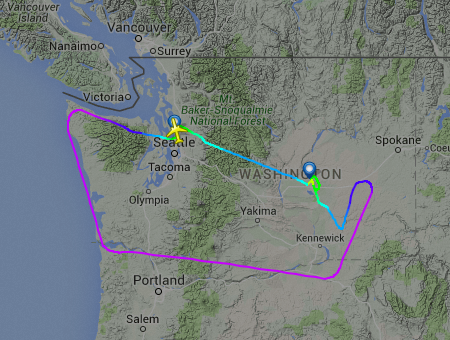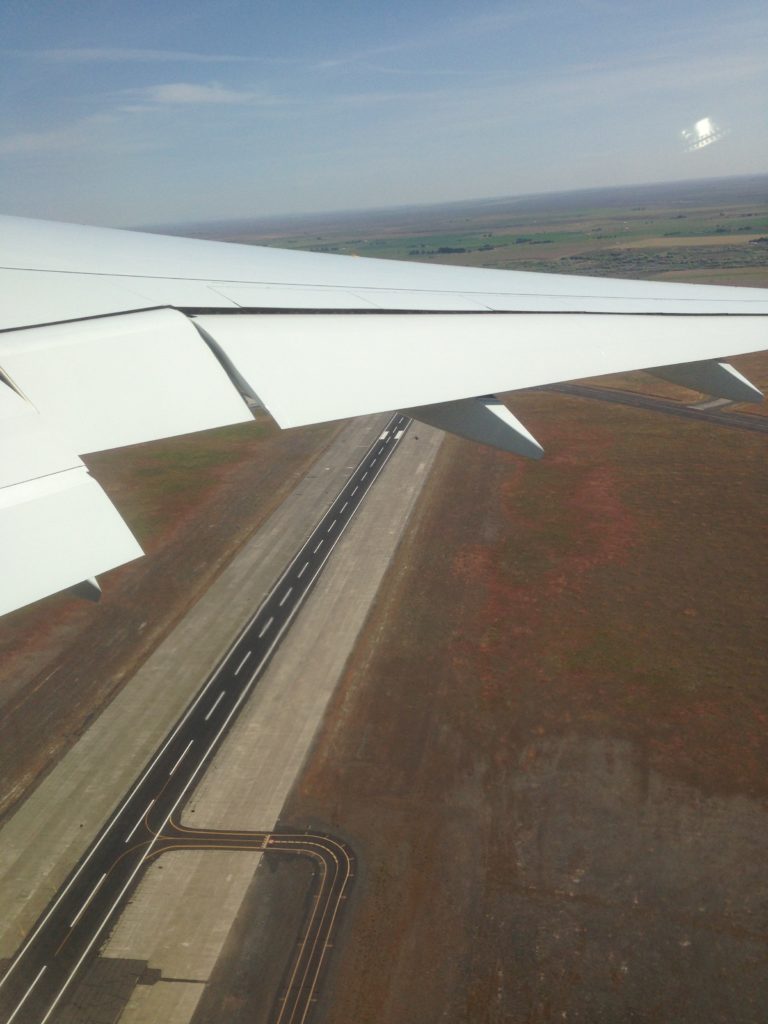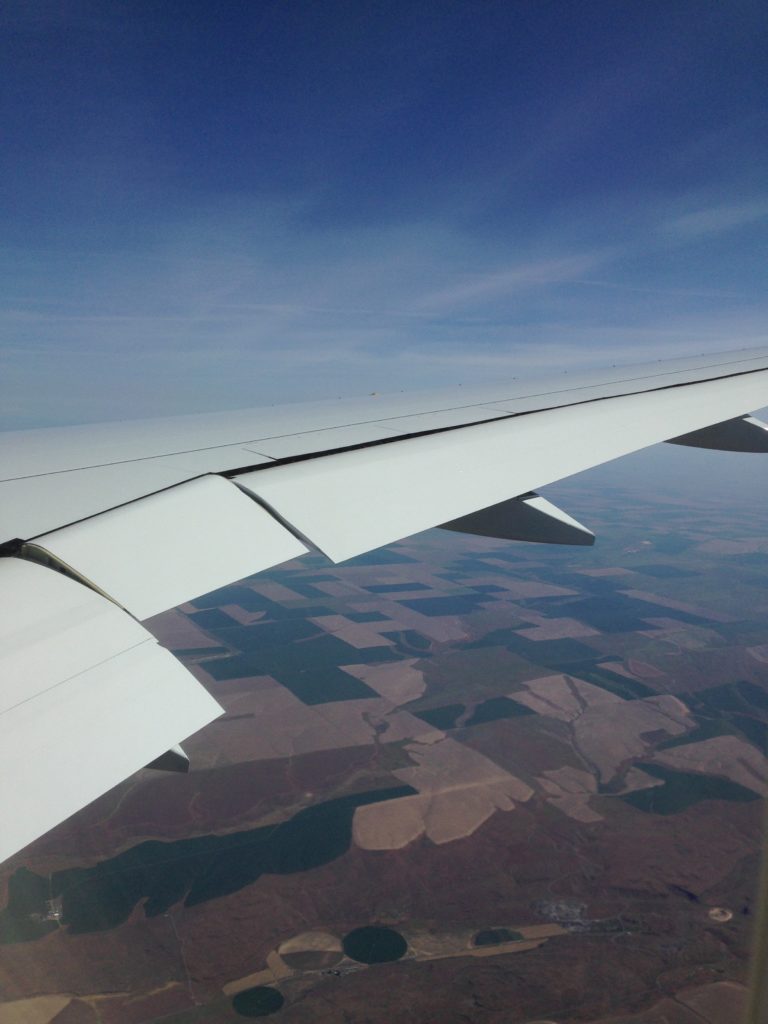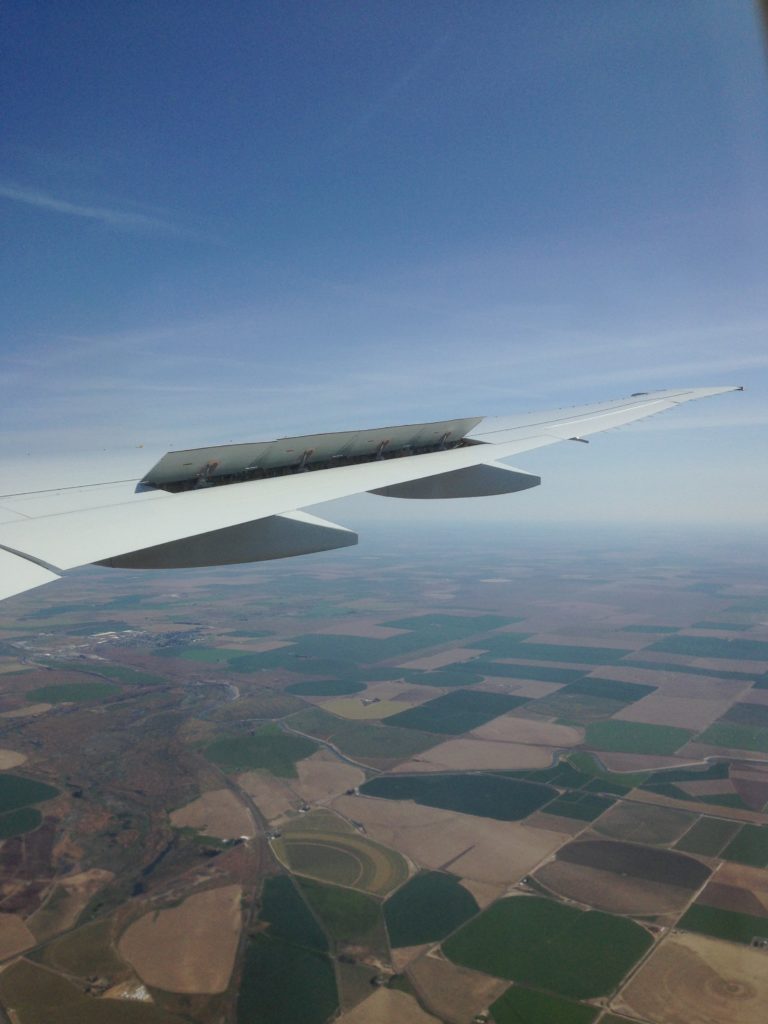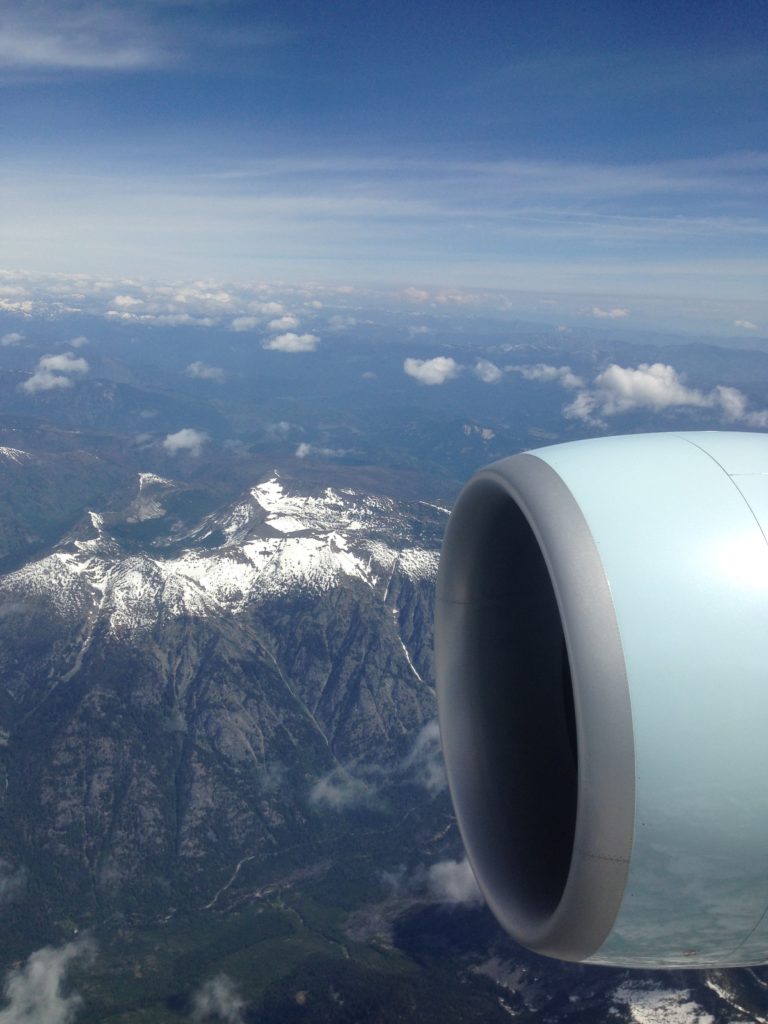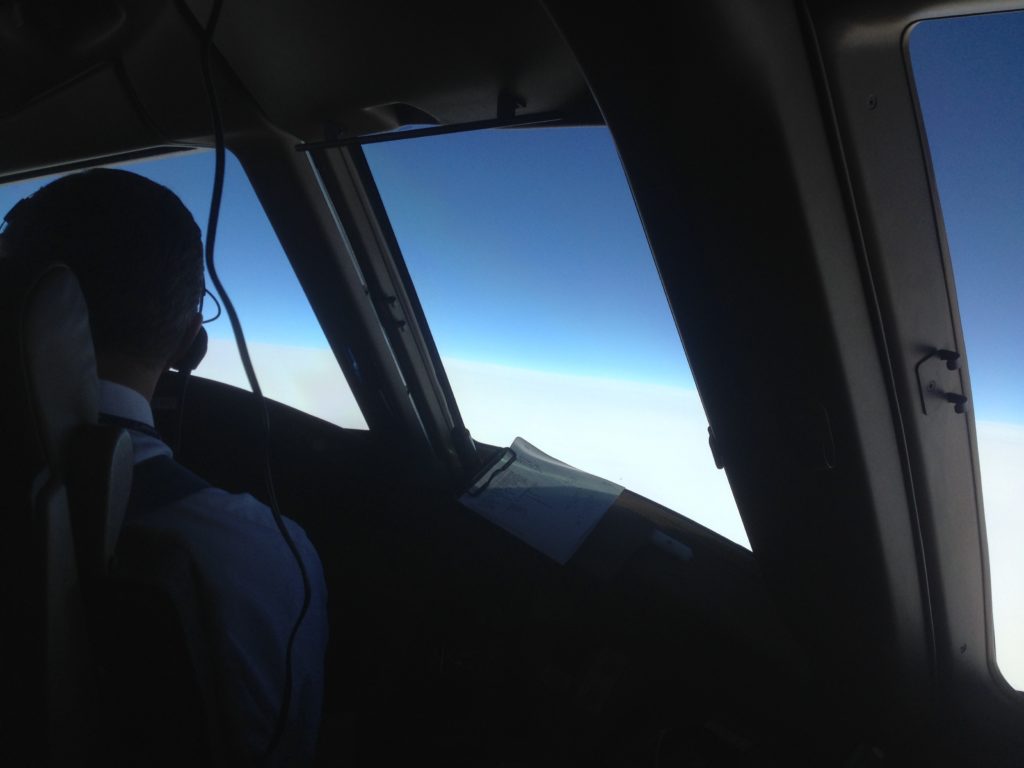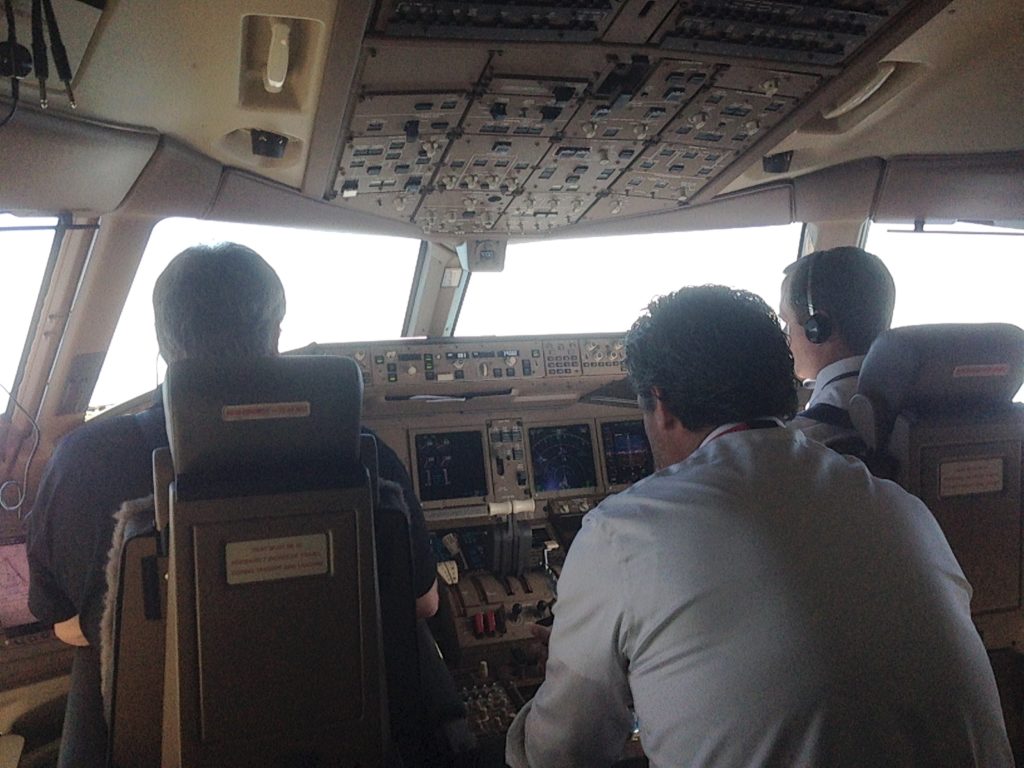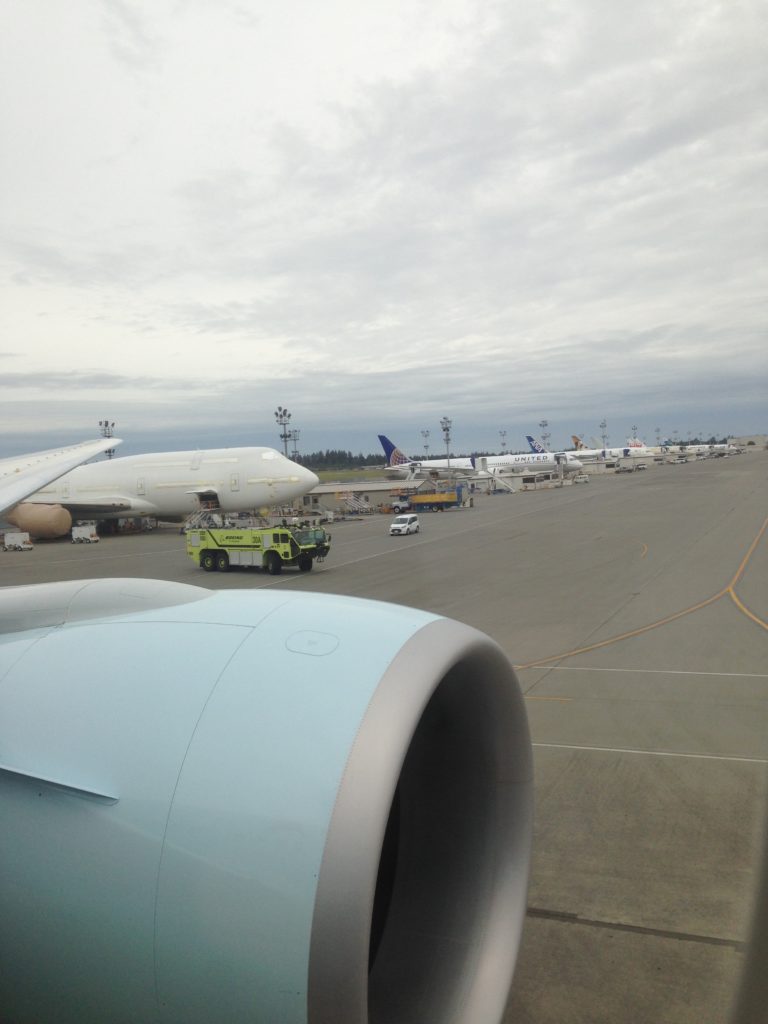MUKILTEO, WA – On Tuesday of this week, our Aircraft Programs team did a customer walk on the B777-300ER (C-FKAU, FIN 749) Air Canada is receiving next week. Our team consists of various managers, mechanics, and engineers. The customer walk is an important step because it is basically a final inspection of the aircraft before delivery.
Air Canada and Boeing inspected the aircraft for the day and looked for snags and other issues on the airplane. We had to put a piece of red tape when we snagged something on the plane. We tested the mechanical characteristics of the seats, such as recline, headrest, armrest, and tray table. The team also tested the flight attendant call button and reading light from every seats. Over 400 seats were inspected during the day!

Our Boeing 777-300ER landing at Paine Field after a successful test flight on May 18. (Photo Credits: Jennifer Schuld)
Test Flight (C1)
The next morning, I was aboard the customer test flight (C1) of the aircraft. It is the second test flight of the plane since it was built. The flight lasted around 2h45 with a touch-and-go and a go-around at Moses Lake (KMWH). The aircraft headed West of the state of Washington after takeoff from Paine Field. The Boeing 777 then followed the shoreline to the South before taking a left turn towards the East. At our cruising altitude of 39,000 feet, the pilots performed several tests on the aircraft.
Some of the tests included the extension of the flaps and the slats close to cruising altitude. The spoilers (speed brakes) were also deployed for a short period of time.
The landing gear was also extended during the flight. The cabin started to shake when the gear was deployed because the aircraft was flying in cruise phase at a higher speed than usual when the aircraft is about to normally land at a lower speed. The gear is the part of the aircraft that creates the most drag.
The flight crew decompressed the cabin at an altitude of 39,000 feet with a feeling for the passengers that the cabin was pressured at 11,000, 12,000, and 13,000 feet. The cabin is usually pressurized at 8,000 feet for the comfort of the passengers. At lower cabin pressure altitudes, passengers will feel better and rested after a long flight. The Boeing 787 is pressurized at 6,000 feet, which is an improvement from the current generation of aircraft.
I am now heading back home to Eastern Canada for the long weekend (Victoria Day). I am not working on Monday since our office is closed for the Holiday! Next Tuesday, I am leaving the Aircraft Programs team and I will be joining the Network Planning group for the rest of the summer. During my trip, I had the opportunity to tour one-on-one the Boeing Everett Factory! Stay tuned for an overview of the factory tour as well as my first few days in the Network Planning department.
Nicolas
Contact the author at berniern@my.erau.edu


